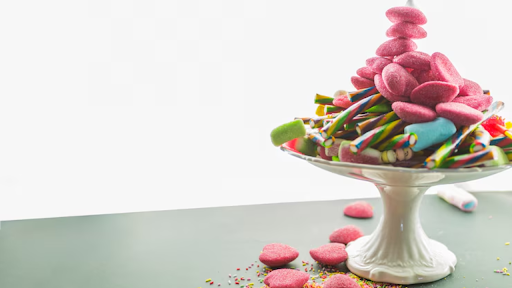Why Understanding Candy Chemistry Can Elevate Your Creations
Candy isn’t just a sweet treat—it’s a science experiment waiting to happen. Behind every perfectly chewy caramel, glossy hard candy, or bouncy gummy lies a fascinating world of chemistry. Whether you’re a home cook experimenting with recipes or an aspiring confectioner aiming for perfection, understanding the science of candy-making can take your creations to the next level. Let’s explore how diving into candy chemistry can transform your kitchen experiments into masterpieces.
The Science Behind Sweet Success
At its core, candy-making is all about controlling sugar and its interactions with other ingredients. Sugar doesn’t just dissolve and boil—it undergoes complex transformations depending on heat, moisture, and acidity. Without understanding these principles, even simple recipes can fall flat.
Here’s why candy chemistry matters:
- It helps you troubleshoot issues like grainy textures or overly sticky candies.
- It gives you the confidence to tweak recipes and try new ideas.
- It ensures consistency, so every batch turns out as good as the last.
Knowing the “why” behind each step makes the process smoother and more rewarding.
How Sugar Behaves Under Heat
Sugar is the star ingredient in most candies, but it’s also highly sensitive to temperature. The way sugar reacts when heated determines whether you end up with soft caramel or rock-hard lollipops.
Key facts about sugar behavior:
- At low temperatures, the sugar stays syrupy and pliable.
- As heat increases, water evaporates, concentrating the sugar and hardening the mixture.
- Beyond 300°F, sugar starts to caramelize, adding rich flavors and deep colors.
Mastering this transformation is the foundation of great candy-making.
The Role of Temperature in Texture
Temperature is one of the most critical factors in candy making. A few degrees can mean the difference between a chewy nougat and a brittle toffee. Using a candy thermometer is essential for precision.
Temperature stages and their uses:
- Soft ball stage (235–245°F): Ideal for fudges, fondants, and marshmallows.
- Hard crack stage (300–310°F): Perfect for brittles, lollipops, and hard candies.
- Thread stage (223–235°F): Great for simple syrups and some soft candies.
Hitting the right stage ensures the texture matches your vision.
Ingredients That Shape Your Candy
While sugar is the backbone of candy, other ingredients play crucial roles in shaping flavor, texture, and stability. Understanding how they interact can help you fine-tune your creations.
Examples of key ingredients:
- Cream or butter adds richness and softness to caramels and truffles.
- Acids like lemon juice or cream of tartar prevent sugar from crystallizing, keeping candies smooth.
- Gelatin gives gummies and marshmallows their signature bounce.
Choosing the right combination unlocks endless possibilities.
Controlling Crystallization
One of the biggest challenges in candy making is avoiding unwanted crystallization, which can make candies grainy instead of smooth. Chemistry offers solutions to keep your mixtures silky and flawless.
Tips for preventing crystallization:
- Use corn syrup or glucose to interfere with sugar crystal formation.
- Stir gently or avoid stirring altogether once the sugar dissolves.
- Brush down the pot sides with a wet pastry brush to dissolve stray crystals.
These small steps make a big difference in texture.
Balancing Flavors and Sweetness
Great candy isn’t just about sweetness—it’s about balance. Adding contrasting flavors or reducing sugar intensity can elevate your creations from ordinary to extraordinary.
Ways to enhance flavor profiles:
- Incorporate natural extracts like vanilla, mint, or citrus for depth.
- Experiment with spices like cinnamon, chili, or cardamom for complexity.
- Add a pinch of salt to balance sweetness and highlight flavors.
Flavor experimentation keeps your candies exciting and unique.
The Importance of Cooling and Setting
Once your candy is cooked, how you cool and set it plays a huge role in the final product. Rushing this step can ruin texture and appearance.
Cooling tips for success:
- Pour mixtures onto greased trays or silicone molds for easy removal.
- Avoid moving or disturbing candies while they are set to prevent cracks.
- Allow candies to cool completely before cutting or packaging.
Patience during cooling ensures professional-quality results.
Scaling Up for Larger Batches
If you’re planning to make candy for events or sell it commercially, scaling up requires careful adjustments. Larger batches demand precision to maintain quality and consistency.
Steps to scale successfully:
- Test recipes in small batches first to refine techniques.
- Invest in larger pots and industrial-grade thermometers for even heating.
- Monitor temperatures closely to avoid uneven cooking.
Planning ahead makes scaling smoother and less stressful.
Troubleshooting Common Issues
Even experienced candy makers run into problems occasionally. Knowing the science behind common issues helps you fix them quickly and efficiently.
Frequent challenges and solutions:
- Sticky candies: Often caused by undercooking; extend cooking time slightly.
- Separation of fats: Reheat gently to reincorporate melted components.
- Brittle texture: Overcooking is likely the culprit; check your thermometer accuracy.
Understanding the cause makes troubleshooting easier.
Bottom Line
The magic of candy lies not just in its taste but in the intricate chemistry that brings it to life. By understanding the science behind Candy Making, you gain the tools to create treats that are as structurally sound as they are delicious. From controlling sugar reactions to balancing flavors and textures, every step becomes an opportunity to innovate and impress.

